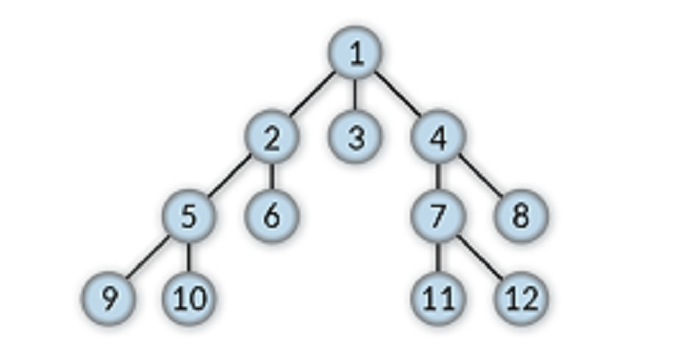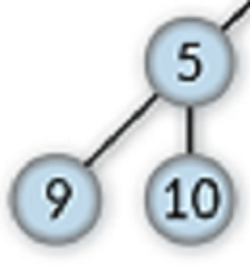Applications of trees in data structures
Data structures
Storage used to organize and store data is known as the data structure. It is a method of managing computerized data to translate or retrieve it more efficiently. A data structure is a database used to store and manage data and optimize and manage computing resources.
Data structures are not just for storing data. It is also used for processing, storage, and preservation. Almost every program or application contains basic and advanced data structures. We have many simple and advanced data structures, and finding a program in a programming language that does not have a data structure is complicated.
A data structure is a form used intelligently and quickly, storing, processing, organizing, and storing data in a machine or computer format. Data structures help represent data for ease of use and manipulation. Every basic program, software, or application consists of two components: data and algorithm - data communication and algorithmic rules and regulations.
We can depict all the above in the following two simple equations:
Operations that are permissible on the data + Related data = Data Structure
Algorithms + Data structures = Programs
There are two types of data structures
- Linear Data structures
- Non-linear data structures
Linear Data structures
In linear data structures, each element is related and followed by a component. So you can delete the instance. There are four types of this data structure. They are:
- Linked lists
- Queue
- Array
- Stack
Non-linear Data structures
In Non-linear data structures, content is not a series of information presented at different levels. There are several ways to pass from one element to another indirectly. Unauthorized data points are shared at least once. There are two types of this non-linear data structure. They are:
- Tree data structure
- Graph data structure
Tree Data structure
A tree is a hierarchical, non-linear file with nodes. Each tree section contains a table of values and store names that refer to other units ("Children"). This document editor is a great way to organize your content and quickly transfer it to your computer. A tree data structure consists of child, structure, and root nodes associated with fields, and this data also contains leaves, branches, and related roots.
The data in the Tree is non-linear. But it is organized differently, more precisely, hierarchically. Trees are considered non-linear because they are hierarchical. Tree data is organized into columns, groups, arrays, and linked lists. A tree is a hierarchical structure; A data model consists of nodes representing and supporting processes. Asynchronous data stores store different data types in a tree-like data structure called a root. All kinds of data are stored in a central location. Each line contains a message. The branches at the bottom of the Tree are called data models.
A type of binary Tree. This is for security purposes only and is a private message. Since this data structure is a separate tree, it can have at most two children. A binary tree can always have 0, 1, or 2 children. This allows a binary tree to provide the benefits of a linked list and an array, making it easier to find hidden objects (since they are mutable data structures). A binary search tree can traverse a nested list and match its speed.
The Tree data structures have different parts. They are:
- Degree of the node
- Height of the tree
- Internal nodes
- Leaf nodes
- Root node
- Edge
- Child node
- Siblings
Basic terminology used in the Tree Data structures:
Before understanding any concept, we must be familiar with the language usually used in the topic. Hence, below are the basic terminology traditionally used in the tree data structure concept.
- Node – The entities in a tree data structure are called nodes, and a node is a place where we store our data or information.
- Edge - An edge is a connection between any two nodes in a tree data structure, and the nodes and edges together make a tree data structure.
- Root node – The root node only has child nodes, and it does not have any parent nodes. We can also say that the node that does not have a parent node in a tree data structure is the root node.
- Parent node – The node that is a predecessor of a particular node is treated as its parent node. Any node in a tree data structure can have only one parent node.
- Child node – The node that is a successor of a particular node is treated as its child node. (In a binary tree, each node can only have a maximum of 2 child nodes).
- External node or Leaf node – The nodes that do not precede any other node (have no child nodes) are called external nodes or leaf nodes. (Dead end of any branch in the tree data structure is called an external node or leaf node in layman's terms).
- Ancestor of a node – Let us consider a particular node as 'n' from a tree data structure. Any node that comes in the path while traversing from the root node to 'n' is the ancestor of the node 'n', including the root node.
- Descendant - Let us consider a particular node as 'n' from a tree data structure. Any node that comes in the path while traversing from 'n' to any leaf node is the descendant of the node 'n', including the leaf nodes.
- Sibling – Child nodes of a particular node are known as siblings.
- Neighbour of a node – Both parents and children of a particular node are treated as the neighbours of that node.
- Internal node – All the nodes except the root node and leaf nodes are treated as internal nodes.
- Subtree – Any node under the root node, along with its chosen descendants, is known as a subtree.
For example,

The image mentioned above represents a tree data structure.
- 1, 2, 3, 4, 5, 6, 7, 8, 9, 10, 11, and 12 are the Tree nodes.
- The lines connecting each node represent edges.
- '1' is the root node in this example.
- '1' is also the parent node for 2, 3, and 4.
- '2' is the parent node for 5 and 6
- 7 and 8 are the child nodes of 4.
- 9, 10, 6, 3, 11, 12, and 8 are called external nodes or root nodes.
- 5, 2, and 1 are the ancestor nodes of 9.
- 7, 8, 11, and 12 are the descendants of 4.
- 2, 3, and 4 are the sibling nodes as they all have a common parent node (1).
- 6, 1, and 5 are the neighbour nodes of 2.
- The level of node 7 is equal to two (2).
- 2, 4, 5, and 7 are the internal nodes.
An example of a sub-tree derived from the above Tree is

Properties of a tree
- The number of edges – The connection between two nodes in a tree data structure is known as an edge. If the total number of nodes in a tree data structure is equal to 'n', then the number of advantages in that data structure is equivalent to 'n-1'. There can be only a single path between any two nodes in a tree data structure.
- Degree of a node – The count of a total number of subtrees that can be extracted from a chosen node of a tree data structure is known as the degree of that node. The degree of any leaf node in a tree data structure must be zero (0). The degree of the root node (also called the degree of the Tree) must have the maximum degree compared to any other nodes in the tree data structure.
- Degree of the Tree – The degree of the root node is treated as the degree of the Tree.
Applications of trees
There are many applications of trees in data structures, and some are listed below:
- Keys can be organized as a tree (like in a BST (Binary search tree)). This helps search any given tree easier and quicker than Linked Lists. However, it is slower compared to arrays. Red-black trees and AVL (Adelson, Velskii & Landis Tree) are self-balancing search trees that guarantee an upper bound of O(log N) for search.
- Keys can be deleted or inserted in a reasonable time, which means we can delete or insert any given tree more easily and quickly than on Linked Lists. However, it is slower compared to arrays. Red-black trees and AVL (Adelson, Velskii & Landis Tree) are self-balancing search trees that guarantee an upper bound of O(log N) for deletion or insertion.
- The implementation of pointers in the tree data structure is similar to linked lists but differs from arrays. This means that the nodes are linked using pointers and do not have an upper limit.
- The tree data structure stores data in an organization structure, like folder structure (HTML, XML, etc.). This data structure stores hierarchical data.
- A binary Search Tree (BST) is a particular type of tree data structure. It is helpful in quick insertion, deletion, and searching for sorted data. You can also find the closest item in the Binary search tree (BST).
- Heap is another type of Tree, and they are used for priority queue implementations and array implementations.
- B+ Tree and B Tree are used for implementing the indexing in databases.
- The Syntax tree is used for parsing, scanning code generation, and evaluating an arithmetic expression in Compiler design.
- K-D tree is another type of tree data structure, and it is used as a space partitioning tree. This tree data structure organizes points in K-dimensional space.
- A tree is an example of the tree data structure that implements dictionaries with prefix lookup.
- A quick pattern search can be done in a fixed text by a Suffix tree.
- The bridges and routers used in computer networks take the help of the shortest path tree and spanning Tree to perform.
- The tree data structures are used as workflows and composite virtual images for visual effects.
- The tree data structure is used as a Decision tree.
- Tree data structures are used as organization charts for large companies.
- They are used in parsing XML files.
- Tree data structures are used in writing algorithms for machine learning models.
- They are used in many servers - for example, Domain Name Server (DNS), etc.
- Tree data structures are used in building computer graphics.
- They are used in the evaluation of expressions.
- The tree data structure stores the defense moves of a player in virtual board games.
- They are used in Java virtual machines (JVM).